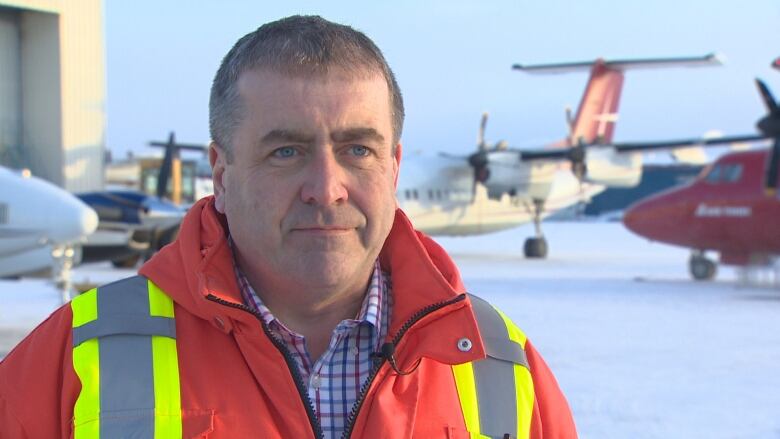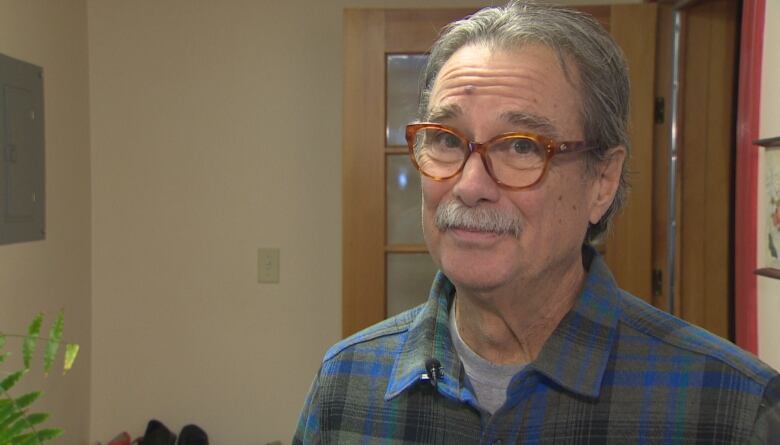Northern aviation companies welcome proposed float plane regulations
Transport Canada proposed regulations years ago but they've yet to come into effect

Float plane operators in the North say they generally support proposed changes to float plane safety rules from Transport Canada, even though thoserules have yet to come into force.
In 2016, Transport Canada proposed changes that would make it mandatory for passengers and crew to wear personal flotation devices (PFDs) and forpilots to receive extratraining on how to evacuate their aircraft in an emergency.
But those changes have not yet been implemented, prompting criticism from the Transportation Safety Board, among others.
Float planes are a vital lifeline into remote corners of Canada's North during the summer months.
Ted Grant, the owner and chief pilot of Simpson Air in Fort Simpson, N.W.T., said that he's torn over whether everyone should wearPFDson aplane.
"Sometimes having them on can help, but every situation is different," he said."Sometimes a life jacket may be a hindrance and get in the way when you're trying to get out."
But Yellowknife-based Air Tindi is already requiring all crew members and passengers to wear PFDs, explained Alasdair Martin, the company's president. That policy began during this summer's flying season.
"It just makes sense," he said, adding that it hasn't been an issue for passengers and employees.
"If you've ever tried putting a life jacket on once you're in the water, it's very, very hard. It's almost impossible," he said.
"People think they can but, really, to have it on as you go in the water is going to make the difference."

Hal Logsdon, the president of the Northwest Territories Float Plane Association, said making wearing PFDs mandatory is a good idea, but believes only a certain type of flotation device would be beneficial: the kind that inflate after being activated by the user.
An already-inflated life preserver could prevent someone from getting out of a plane, if it was sinking and upside down, he said.
Gerd Mannsperger, chief pilot for Alpine Aviation in Whitehorse, said in a phone interview from Vancouver that he also agrees passengers having PFDs attached to them is a good idea, and it will help in some situations.
"It's definitely going to be a challenge that we'll have to meet as an industry," he said.
Emergency training for pilots underway
Logsdon said he's helped set up a training course on emergency exits before. It costs participants a few hundred dollars and was popular among pilots, he said.
"I would urge all people who operate float planes, whether they're commercial or private, to invest in an [emergency exit] course whether it's mandatory or not," he said.
"I think it's money well spent. I don't think too many people who've taken the course would argue with me."
Mannspergersaid more training for pilots is always beneficial, including learning how to quickly escape an aircraft in an emergency situation, such as an aircraft sinking upside down in water.
"It gives them, really, a heads-up to understand why it is so important to brief the customers properly and really put that extra effort in," he said.

Martin said Air Tindi has, for years, made sure its float plane pilots have received that training.
In the wake of the a 2009 seaplane crash in B.C., Transportation Safety Board investigators recommended rapid emergency exits, such as pop-out windows, be mandatory in the country's more than 700 commercial seaplanes.
Grant said one of his two planes has those kind of windows, and though they won't help in every situation,they're good to have.
He said he doesn't plan on adding them to his other plane, given the minimum $10,000 cost he estimated.
"It's just way too expensive to even try it out," Grant said.
Mannsperger said adding those windows would be "simply not workable" for a lot of planes because of the added frames, which would reduce the size of the windows, limiting the number of people it's able to fit through.
Mannsperger and others said one of the most significant challenges for crew members is getting passengers namely those excited to go on a vacation to heed pre-flight safety demonstrations.
"They don't want to hear about safety stuff because they feel they're safe," Mannsperger said.
"You know, 99.9 per cent [of the time] we are, but you've got to stop for a second and pay attention."












_(720p).jpg)


 OFFICIAL HD MUSIC VIDEO.jpg)
.jpg)



























































































